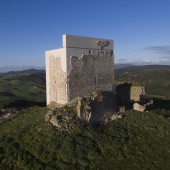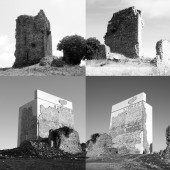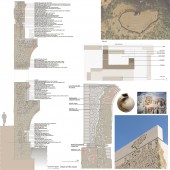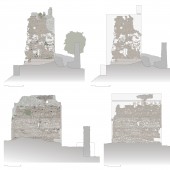Matrera Castle Intervention Heritage by Carlos Quevedo Rojas |
Home > Winners > #48588 |
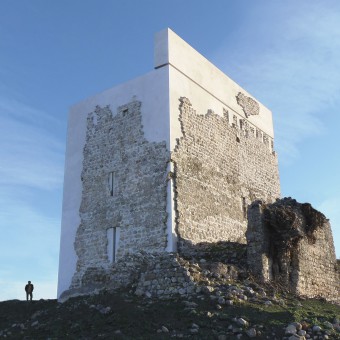 |
|
||||
| DESIGN DETAILS | |||||
| DESIGN NAME: Matrera Castle PRIMARY FUNCTION: Intervention Heritage INSPIRATION: The essence of the project is not intended to be, therefore, an image of the future, but rather a reflection of its own past, its own origin. With brandian reference, this project aims to look at a unifying potential restoration, without undertaking the task of building a false historical monument or cancellling every trace of the passage of time. It tries to approach the work in recognition of the monumentum or memory in its physical consistency and its dual polarity, aesthetic and historical, in order to transmit those two aspects to the future. UNIQUE PROPERTIES / PROJECT DESCRIPTION: With compatibility and authenticity criteria, the intervention looks at structurally consolidating the elements that were at risk, to differentiate the additions from the original structure, avoiding mimetic reconstructions that our law prohibits, and recovering the volume and tonality that the tower originally had as a landscape icon. OPERATION / FLOW / INTERACTION: This medieval tower has always been a historical landmark due to its strategic position in the latest Nazari border, where the Guadalete Valley meets the Betica mountain range. However, it had partially collapsed in 2013, losing part of its imposing volume and putting at risk not only the architectural stability of the rest of the tower, but also its role as a landscape landmark, linked to the iconography and culture of the region. Therefore, our project was to consolidate such a landscape icon. PROJECT DURATION AND LOCATION: Location, Villamartín, Cádiz, Spain. Dates, from 2011 to 2015 |
PRODUCTION / REALIZATION TECHNOLOGY: All that previous historical, constructive, functional, structural and pathological analyses, as well as the archaeological supervision that has taken place have been important to define the details of the project. New discoveries have appeared during the works that have served to recover part of the interesting history of this monument of cultural interest. The very limestone that had collapsed was re-used for the buttresses that guarantee its stability and for the reinforcements/prote SPECIFICATIONS / TECHNICAL PROPERTIES: In parallel to the practical intervention of movable heritage, its historical value has also been enhanced, facing its original volume using a continuous coating of mortar of lime similar to the one which originally covered it, which clogs the gap and allows reading of the architecturally recessed unit. Likewise the upper casing defines its construction phases enhancing the original battlements shots that were hidden behind their stratigraphic superposition. TAGS: Architecture, consolidation, heritage, restoration, landscape, monument, castle, tower RESEARCH ABSTRACT: This medieval tower has always been a historical landmark due to its strategic position in the latest Nazari border, where the Guadalete Valley meets the Betica mountain range. However, it had partially collapsed in 2013, losing part of its imposing volume and putting at risk not only the architectural stability of the rest of the tower, but also its role as a landscape landmark, linked to the iconography and culture of the region. Therefore, our project was to consolidate such a landscape icon. CHALLENGE: These cultural models and emblems of our cities and territories have suffered enormously due to the economic crisis, which has made them fall into decadence because of the lack of economic interest in their maintenance. ADDED DATE: 2016-04-11 10:12:13 TEAM MEMBERS (6) : Architect: Carlos Quevedo Rojas , Collaborators: Cristina Pérez Prado, Joaquín Martín Rizo, Promotor: Ubri-Prado S.L., Construction: Arcobeltia Construcciones S.L., Technical: José Antonio Cabeza Pérez and IMAGE CREDITS: Carlos Quevedo Rojas Mariano Copete Franco Francisco Chacón Martínez |
||||
| Visit the following page to learn more: http://www.carquero.com | |||||
| AWARD DETAILS | |
 |
Matrera Castle Intervention Heritage by Carlos Quevedo Rojas is Winner in Cultural Heritage and Culture Industry Design Category, 2016 - 2017.· Read the interview with designer Carlos Quevedo Rojas for design Matrera Castle here.· Press Members: Login or Register to request an exclusive interview with Carlos Quevedo Rojas. · Click here to register inorder to view the profile and other works by Carlos Quevedo Rojas. |
| SOCIAL |
| + Add to Likes / Favorites | Send to My Email | Comment | Testimonials | View Press-Release | Press Kit |
Did you like Carlos Quevedo Rojas' Cultural Heritage Design?
You will most likely enjoy other award winning cultural heritage design as well.
Click here to view more Award Winning Cultural Heritage Design.


